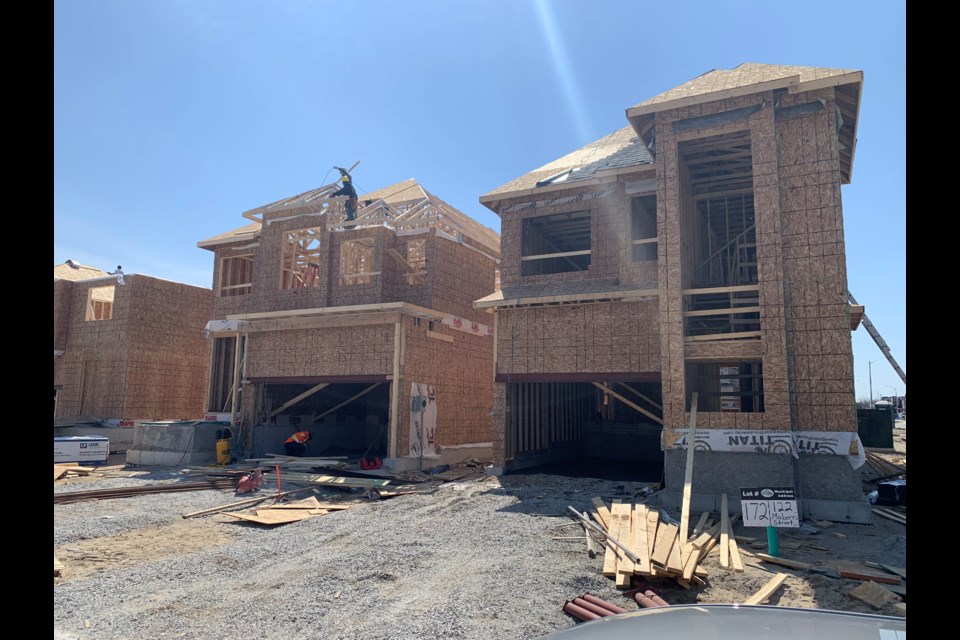During the height of the pandemic, as workers across the country set up offices in their homes, many fled the big city in search of their own house and the Barrie area became a destination of choice.
While Barrie has, proportionally, more single-family homes than Toronto, data from the 2021 Census shows apartments are making up more of the local housing stock.
In the Barrie CMA, which includes Innisfil and Springwater Township, 68 per cent of the dwellings are single detached houses, according to Statistic Canada’s release this week on the country’s shifting demographic profile, based on data collected during the 2021 Census.
“The majority of the dwellings that people are occupying in Barrie are single detached homes,” said Jeff Randle, a senior analyst with Statistics Canada.
The rest of the stock largely consists of low-rise apartments in buildings with fewer than five storeys, representing 8.8 per cent of those occupied by residents, and row houses with 8.9 per cent.
In Barrie proper, only 58.2 per cent of the dwellings are single detached houses, while they make up the vast majority of the housing in Springwater Township and Innisfil, representing more than 90 per cent of the homes in the two outlying communities.
Nationally, 52.6 per cent of the dwellings are single detached, rising somewhat to 53.6 per cent in Ontario.
In Barrie’s more diverse housing stock, 11.4 per cent are row houses, up from 10.5 per cent in 2016. Apartments in low-rise buildings claim 11.6 per cent of the housing stock, up from 10.9 per cent in 2016 and the proportion of buildings in Barrie with more than five storeys have ebbed up to 7.7 per cent in 2021 from 7.6 five years earlier.
“Barrie city itself is a bit more similar to what we see in Canada and in Ontario, though there are still proportionately more single detached homes in Barrie,” said Randle.
It is those houses which are believed to have fuelled, in part, the migration into Barrie, particularly during the pandemic exodus out of Toronto.
The Toronto CMA, by contrast, has proportionally fewer detached homes with single detached homes making up just 39 per cent of its housing stock, Randle said.
Apartments in buildings taller than five storeys account for 30.7 per cent of Toronto’s housing stock.
“In larger urban areas, the downtown area of these urban centres tended to grow faster than other regions,” he said. “They have far more highrise apartments there.
“People living in Barrie, they have more options there, proportionally more options, for living in single detached.”
Earlier surveys have found that the country’s primary rental stock has grown during the past decade. Randle said that is now reflected in the types of housing seen in the census, which is conducted every five years.
Across the country, there was a 14.7 per cent growth in highrise apartments in 2021 since the previous census conducted in 2016. That far outpaces the total growth in the number of private dwellings, which was 6.4 per cent.
Nationally and in Barrie, the rapid increase in the number of apartments is expected to continue and even accelerate.
Across the country, apartments represented more than half of the building permits issued from 2016 to 2021. Before 2011, apartments accounted for less than 40 per cent of building permits.



